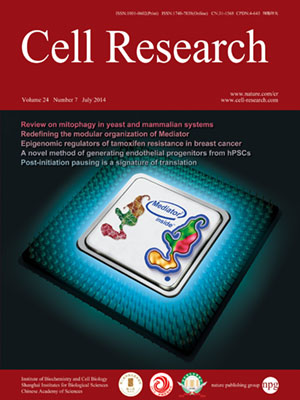
Volume 24, No 7, Jul 2014
ISSN: 1001-0602
EISSN: 1748-7838 2018
impact factor 17.848*
(Clarivate Analytics, 2019)
Volume 24 Issue 7, July 2014: 787-795 | Open Access
REVIEW
Receptor-mediated mitophagy in yeast and mammalian systems
Lei Liu1, Kaori Sakakibara2, Quan Chen1 and Koji Okamoto2
1State Key Laboratory of Biomembrane and Membrane Biotechnology, Institute of Zoology, Chinese Academy of Sciences, Beijing 100101, China
2Laboratory of Mitochondrial Dynamics, Graduate School of Frontier Biosciences, Osaka University, Suita, Osaka 565-0871, Japan
Correspondence: Quan Chen, E-mail: chenq@ioz.ac.cn; Koji Okamoto,(kokamoto@fbs.osaka-u.ac.jp)
Mitophagy, or mitochondria autophagy, plays a critical role in selective removal of damaged or unwanted mitochondria. Several protein receptors, including Atg32 in yeast, NIX/BNIP3L, BNIP3 and FUNDC1 in mammalian systems, directly act in mitophagy. Atg32 interacts with Atg8 and Atg11 on the surface of mitochondria, promoting core Atg protein assembly for mitophagy. NIX/BNIP3L, BNIP3 and FUNDC1 also have a classic motif to directly bind LC3 (Atg8 homolog in mammals) for activation of mitophagy. Recent studies have shown that receptor-mediated mitophagy is regulated by reversible protein phosphorylation. Casein kinase 2 (CK2) phosphorylates Atg32 and activates mitophagy in yeast. In contrast, in mammalian cells Src kinase and CK2 phosphorylate FUNDC1 to prevent mitophagy. Notably, in response to hypoxia and FCCP treatment, the mitochondrial phosphatase PGAM5 dephosphorylates FUNDC1 to activate mitophagy. Here, we mainly focus on recent advances in our understanding of the molecular mechanisms underlying the activation of receptor-mediated mitophagy and the implications of this catabolic process in health and disease.
10.1038/cr.2014.75
FULL TEXT | PDF
Browse 2435


